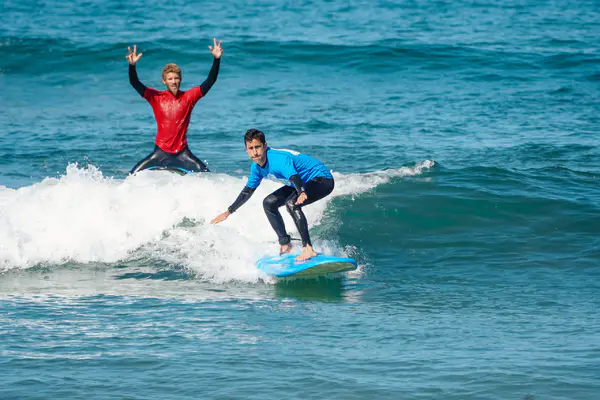Surfing is an exhilarating water sport that involves riding waves on a surfboard. It requires a blend of balance, strength, and skill. One of the essential elements that surfers focus on is their “toe” position. But what does “toe” mean in surfing, and why is it important? In this article, we’ll explore the concept of “toe” in surfing, its significance, and how it affects a surfer’s performance on the waves.
The term “toe” in surfing generally refers to the placement and positioning of a surfer’s toes on the board. This aspect might seem minor, but it plays a crucial role in maintaining balance, controlling the board, and executing maneuvers. We’ll delve into the mechanics of toe placement, the different techniques surfers use, and how it impacts their surfing experience.
The Basics of Surfing and Board Anatomy
Introduction to Surfing
Surfing is more than just a sport; it’s a lifestyle. Originating from ancient Polynesian cultures, surfing has evolved into a global phenomenon. It involves riding ocean waves on a specially designed board. Surfers seek to harness the power of waves, performing tricks and maneuvers that showcase their skills.
Anatomy of a Surfboard
Understanding the anatomy of a surfboard is crucial for comprehending the role of toe placement. A typical surfboard consists of several parts, including the nose, tail, rails, deck, and fins. Each part has a specific function and influences how the board behaves on the water. The deck is where the surfer stands, and the positioning of the feet, especially the toes, can affect balance and control.
Toe Placement and Surfing Stance
Understanding Toe Placement
Toe placement refers to the positioning of a surfer’s toes on the board. It can vary depending on the type of wave, the surfer’s skill level, and the desired maneuver. Proper toe placement ensures stability and control, allowing the surfer to navigate the wave efficiently.
Regular vs. Goofy Stance
Surfers generally adopt one of two stances: regular or goofy. In a regular stance, the surfer’s left foot is forward, while in a goofy stance, the right foot is forward. The stance affects the positioning of the toes and the overall distribution of weight on the board.
The Mechanics of Toe Placement
Balance and Stability
The positioning of the toes is critical for maintaining balance and stability. Proper toe placement helps distribute weight evenly across the board, preventing the surfer from tipping over. It also allows for quick adjustments to adapt to the wave’s movements.
Turning and Maneuvering
Toe placement plays a vital role in turning and maneuvering the surfboard. By shifting their toes, surfers can change the board’s direction, carve into the wave, or perform tricks. The toes act as a pivot point, enabling precise control over the board’s movements.
Techniques for Optimal Toe Placement
Finding the Sweet Spot
The “sweet spot” on a surfboard is the ideal position where a surfer can achieve maximum control and stability. Finding this spot involves experimenting with different toe placements and adjusting according to the wave conditions. Experienced surfers often have a keen sense of where the sweet spot is on their board.
Adjusting for Different Conditions
Different wave conditions require different toe placements. For smaller waves, surfers might position their toes closer to the center for stability. In larger waves, placing the toes further back can provide more control and allow for sharper turns. Adapting toe placement to the wave’s size and shape is essential for optimal performance.
Common Mistakes and How to Avoid Them
Incorrect Toe Placement
One common mistake among beginner surfers is incorrect toe placement. Placing the toes too far forward or backward can lead to loss of balance and control. It’s essential to understand the impact of toe placement and practice finding the correct position.
Overcompensation
Overcompensation occurs when surfers shift their toes excessively to correct a mistake. This can result in instability and hinder smooth maneuvering. Learning to make subtle adjustments is key to maintaining control without overcompensating.
See Also: What Is a Kook in Surfing Terms
Training and Exercises for Improved Toe Control
Balance Training
Improving balance is crucial for mastering toe placement. Balance training exercises, such as using a balance board or practicing yoga, can enhance a surfer’s ability to maintain stability on the board. These exercises strengthen the core and leg muscles, essential for precise toe control.
Foot and Toe Strengthening
Strengthening the feet and toes is also vital for surfing. Exercises like toe curls, calf raises, and barefoot running can improve foot and toe strength. Strong feet and toes enable better grip on the board and more controlled movements.
The Role of Equipment in Toe Placement
Board Design and Toe Placement
The design of the surfboard can influence toe placement. Different board shapes, sizes, and fin setups can affect how a surfer positions their toes. Understanding how equipment choices impact toe placement is essential for choosing the right board for one’s surfing style.
Traction Pads and Wax
Traction pads and wax provide grip on the surfboard, helping surfers maintain their toe placement. Traction pads are placed on the deck, providing a textured surface for the feet. Wax is applied to the board’s surface, enhancing grip. Proper use of these tools can improve toe control and prevent slipping.
Conclusion
In conclusion, toe placement is a critical aspect of surfing that significantly affects a surfer’s performance. From maintaining balance to executing complex maneuvers, the position and movement of the toes play a vital role in navigating the waves. Understanding the mechanics of toe placement, practicing proper techniques, and choosing the right equipment can enhance a surfer’s skills and overall experience. Whether you’re a beginner or an experienced surfer, mastering toe placement can make a significant difference in your surfing journey.

